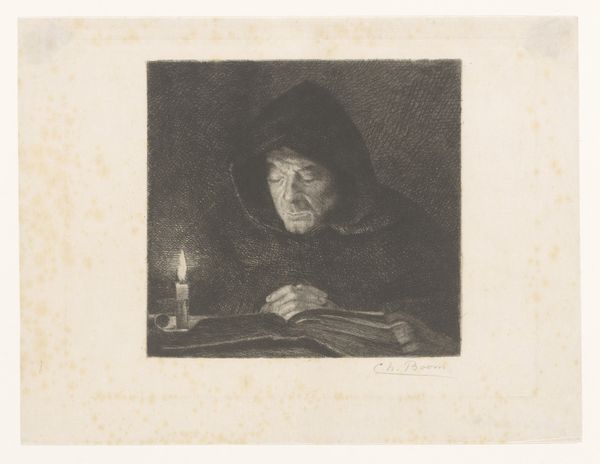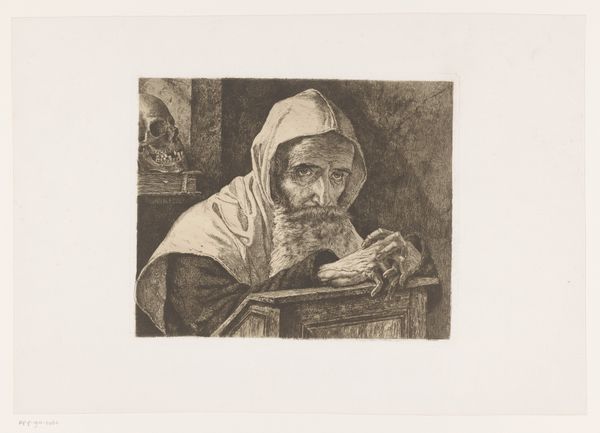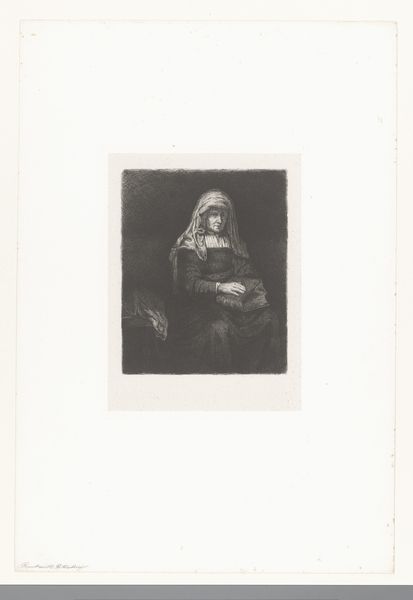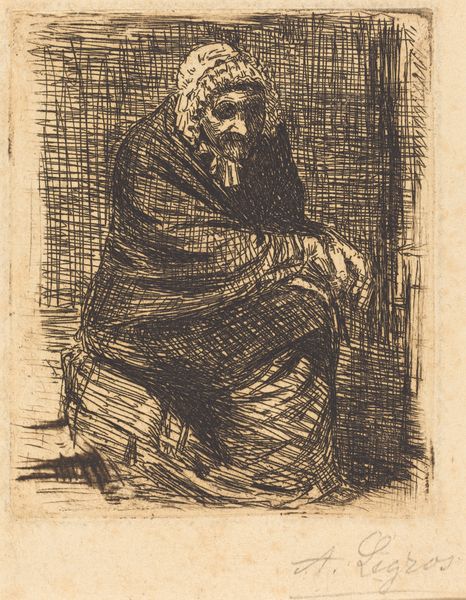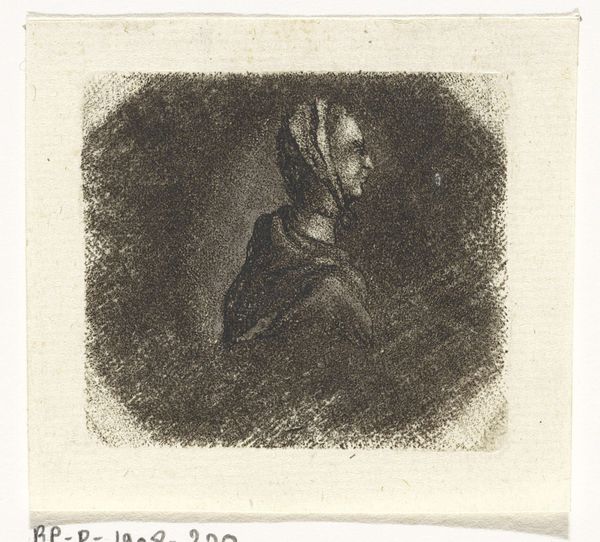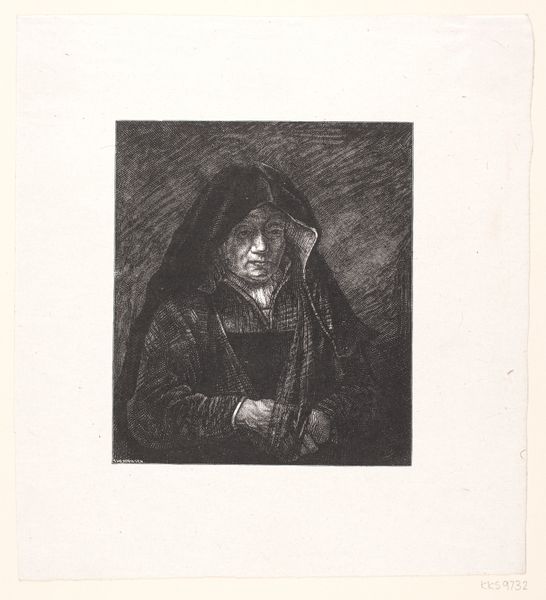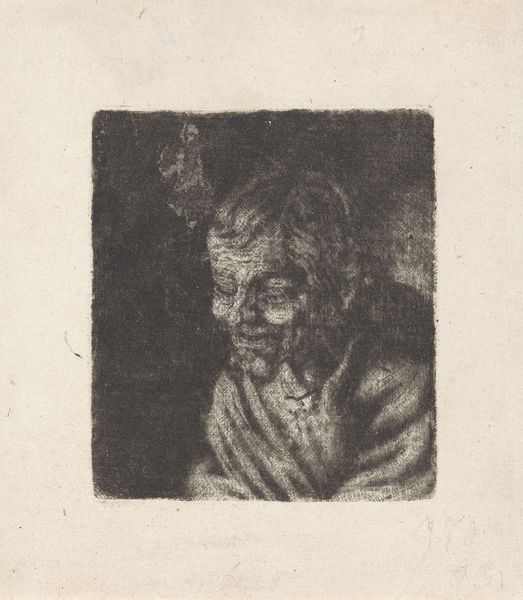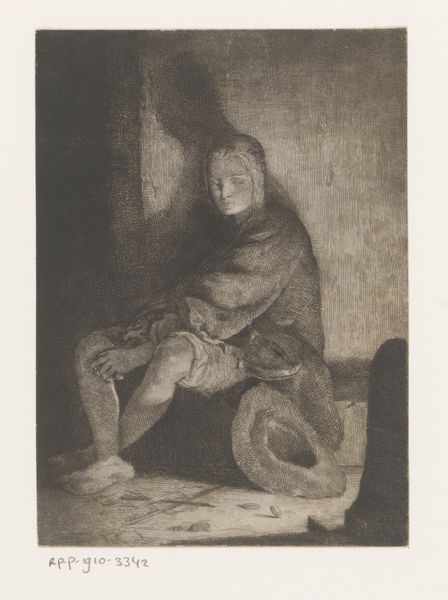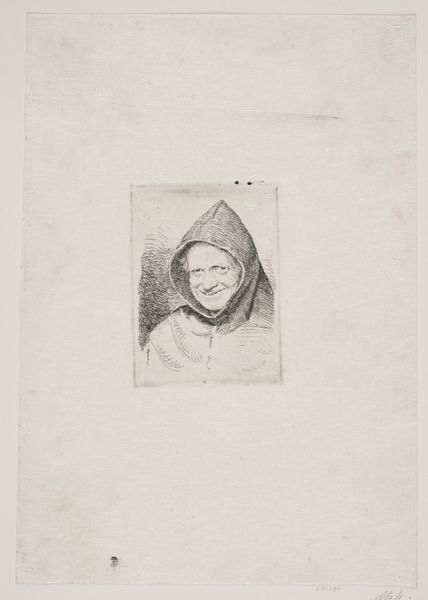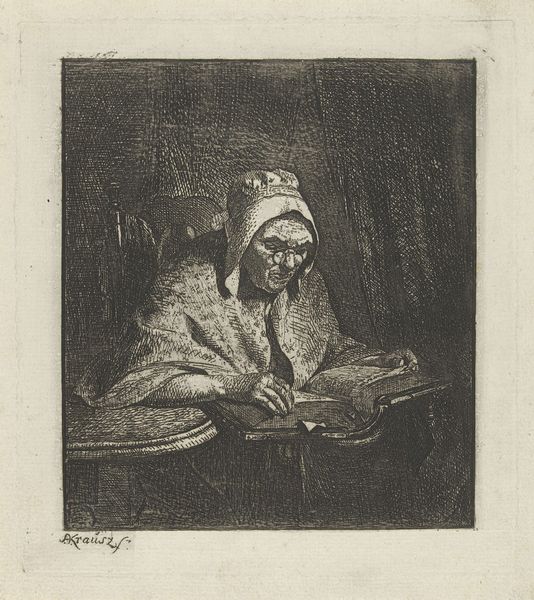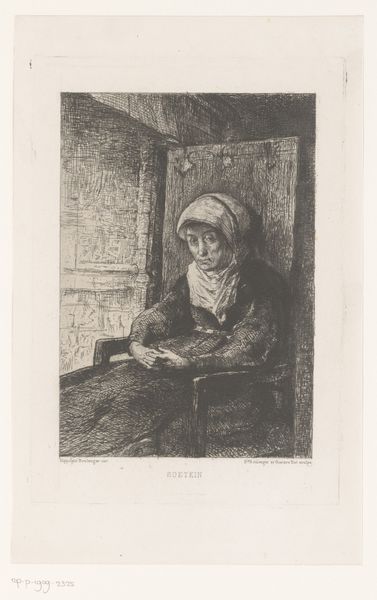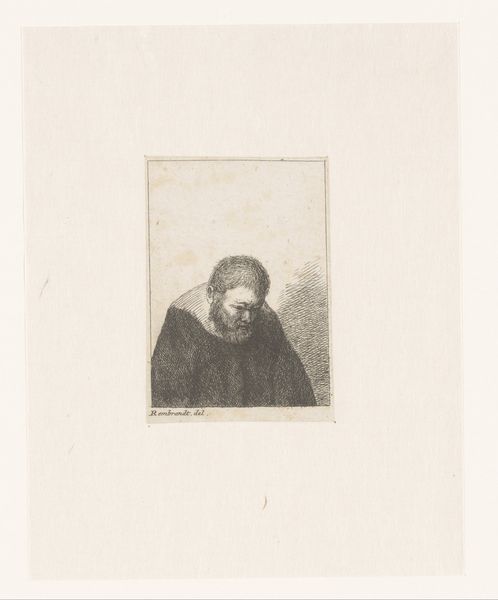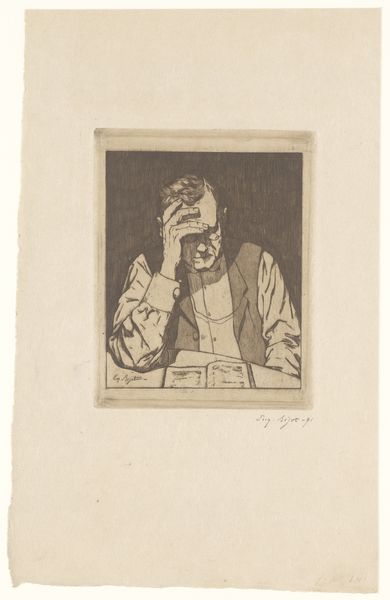
print, etching
#
portrait
#
medieval
# print
#
etching
#
old engraving style
#
caricature
#
figuration
#
portrait reference
#
portrait drawing
Dimensions: height 120 mm, width 110 mm
Copyright: Rijks Museum: Open Domain
A. van Ravesteyn created this print of a praying monk using etching, a printmaking process that dates back to the 16th century. The etcher covers a metal plate with a waxy, acid-resistant ground. The artist then scratches an image into the ground with a needle, exposing the metal beneath. Next, the plate is immersed in acid, which bites into the exposed lines, creating grooves. The longer the plate is exposed to the acid, the deeper the lines become. The plate is then inked, and the surface wiped clean, leaving ink only in the etched lines. Finally, the plate is pressed onto paper, transferring the image. The crosshatching used to delineate light and shadow shows the depth and texture of the image, and this is all created by labour: the labour of drawing, the labour of chemical erosion, the labour of printing. This process allows for the creation of multiple identical images, but each is still infused with the hand of the artist. The image is about piety, but it is also about the technologies of reproduction. Considering the materials, making, and context allows us to understand the full meaning of the artwork, bridging the gap between craft and fine art.
Comments
No comments
Be the first to comment and join the conversation on the ultimate creative platform.
